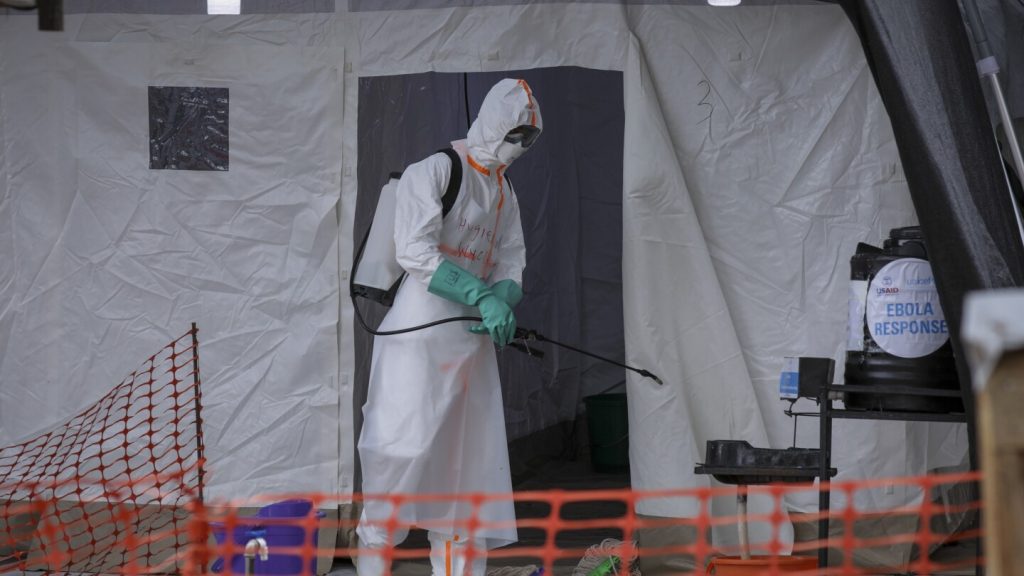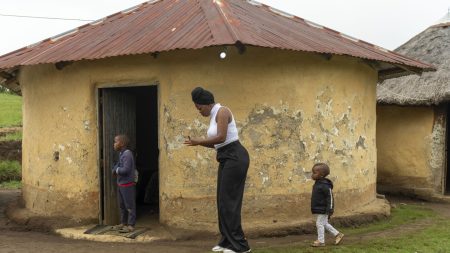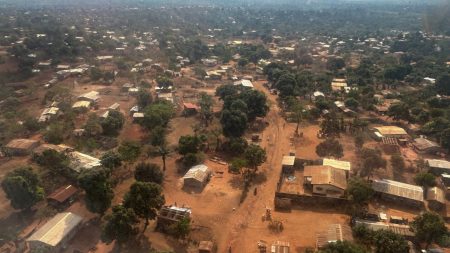Uganda Prepares to Roll Out Trial Vaccine Against Ebola Outbreak
Ugandan health officials are gearing up to deploy a trial vaccine as part of their efforts to control an Ebola outbreak in the capital city, Kampala. According to Pontiano Kaleebu, the executive director of the Uganda Virus Research Institute (UVRI), scientists are quickly developing research protocols to facilitate the distribution of over 2,000 doses of a candidate vaccine targeting the Sudan strain of Ebola. While the vaccine is not yet licensed, regulatory approvals are being fast-tracked to ensure its timely deployment. The World Health Organization (WHO) has also announced its support for Uganda’s response, including access to 2,160 doses of the trial vaccine. Research teams are already working in the field alongside surveillance teams, awaiting the necessary approvals to proceed.
The current outbreak was declared after a nurse at Kampala’s main referral hospital died from the Sudan strain of Ebola. Authorities are still investigating the source of the infection, and no other confirmed cases have been reported so far. The situation underscores the urgency of finding effective measures to combat the outbreak, particularly given the densely populated and highly mobile nature of Kampala, home to approximately 4 million people. The deceased nurse had sought treatment at multiple locations, including a hospital just outside Kampala and another in the eastern city of Mbale, before succumbing to the disease. His movements highlight the potential challenges in tracing contacts and containing the spread of the virus.
The Race to Develop and Deploy an Effective Ebola Vaccine
The candidate vaccine and treatments being made available are part of clinical trial protocols aimed at testing their efficacy and safety. While the manufacturer of the vaccine has not been disclosed, it is known that there are currently no approved vaccines for the Sudan strain of Ebola. This gap in medical preparedness adds to the complexity of the situation. However, Uganda is not new to Ebola outbreaks, having experienced a devastating outbreak in 2000 that claimed hundreds of lives, as well as a more recent outbreak in 2022 that killed at least 55 people. During the 2022 outbreak, Ugandan officials had access to candidate vaccine doses, but the outbreak was declared over before a vaccine study could be initiated.
The urgency of the current situation has reignited efforts to develop and deploy a vaccine. The trial vaccine being considered is similar to the rVSV-ZEBOV vaccine, which was successfully used during an Ebola outbreak in the Democratic Republic of Congo between 2018 and 2020. That vaccine proved instrumental in containing the spread of the Zaire strain of Ebola, vaccinating over 3,000 individuals at risk. While the Sudan strain is different, the lessons learned from past outbreaks provide a foundation for the current response efforts. However, the lack of a licensed vaccine for the Sudan strain means that the trial vaccine will need to undergo rigorous testing to ensure its safety and effectiveness.
A Look Back at Uganda’s History with Ebola
Uganda has a long and tumultuous history with Ebola, having faced multiple outbreaks over the years. One of the most notable outbreaks occurred in 2000, when the virus killed hundreds of people. More recently, in 2022, an outbreak in central Uganda claimed the lives of at least 55 individuals. These experiences have honed Uganda’s response mechanisms, but the current outbreak in Kampala presents unique challenges due to the city’s densely populated and highly mobile population.
The 2014-2016 Ebola outbreak in West Africa, which killed over 11,000 people, serves as a stark reminder of the devastating impact of the virus when it is not promptly contained. While Uganda has managed to keep its outbreaks relatively localized, the current situation in Kampala has raised concerns about the potential for wider spread. The fact that the nurse who died had traveled to multiple locations, including Mbale, highlights the need for rapid contact tracing and surveillance to identify and monitor individuals who may have been exposed to the virus.
Contact Tracing: A Critical Component in Combating Ebola
Contact tracing is a cornerstone of Ebola outbreak response, as the virus spreads through direct contact with the bodily fluids of an infected person or contaminated materials. In the current outbreak, at least 44 contacts of the deceased nurse have been identified, including 30 healthcare workers and patients. These individuals are being closely monitored for symptoms, which typically include fever, vomiting, diarrhea, muscle pain, and in severe cases, internal and external bleeding.
The challenges of contact tracing in Kampala are significant, given the city’s population density and mobility. The deceased nurse’s movements before his death further complicate efforts, as health authorities must track down and monitor individuals who may have come into contact with him. Despite these challenges, Uganda’s health ministry has demonstrated its ability to respond effectively to Ebola outbreaks in the past, and the current situation is no exception. The rapid identification of contacts and the deployment of research teams to the field are critical steps in stemming the spread of the virus.
Regional Outbreaks Highlight the Broader Challenge
The current Ebola outbreak in Uganda is the latest in a series of viral hemorrhagic fever outbreaks in the East African region. Earlier this month, Tanzania declared an outbreak of Marburg disease, an Ebola-like virus, in the Kagera region, where at least two people have died. Meanwhile, Rwanda recently announced the end of its own Marburg outbreak. These regional outbreaks underscore the broader challenge of controlling viral hemorrhagic fevers in East Africa, where outbreaks often occur in remote and resource-limited areas.
The proximity of these outbreaks to Uganda’s borders raises concerns about cross-border transmission, particularly given the high mobility of populations in the region. The ongoing Marburg outbreak in Tanzania, for example, is located near the Ugandan border, increasing the risk of the virus spreading into Uganda. Health authorities in both countries are likely working closely together to enhance surveillance and preparedness measures. The regional dimension of these outbreaks highlights the importance of collaboration and coordination in responding to public health emergencies.
Understanding Ebola: Its Spread and Impact
Ebola is a highly infectious and often deadly viral disease that spreads through contact with the bodily fluids of an infected person or contaminated materials. Symptoms typically begin with fever, vomiting, and diarrhea, and can progress to more severe complications, including muscle pain, internal bleeding, and external bleeding. The virus is believed to have originated from an infected animal or the consumption of raw meat from such an animal, although the exact natural reservoir of Ebola remains unknown.
First identified in 1976 in two simultaneous outbreaks in South Sudan and the Democratic Republic of Congo, Ebola has since caused numerous outbreaks across Africa. The virus is named after the Ebola River, near which one of the initial outbreaks occurred. While significant progress has been made in understanding and responding to Ebola, the lack of approved vaccines for certain strains, such as the Sudan strain, poses a significant challenge. The current outbreak in Uganda serves as a reminder of the need for continued research, investment, and preparedness to combat this deadly virus.












